Saba |
|
|
|
| Übersicht – Contents: | |
Diese Seite ist Teil des Projektes
Saba |
|
|
|
| Übersicht – Contents: | |
Flagge – Flag: |
|
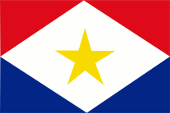 |
Flagge von Saba – flag of Saba, Seitenverhältnis – ratio = 2:3, Quelle/Source, nach/by: Flags of the World |
historische Flaggen – historical Flags: |
|
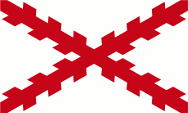 |
1493–1640, Die Insel gehört zum spanischen Machtbereich – The island belongs to the Spanish sphere of influence, Quelle/Source, nach/by: Wikipedia (EN) |
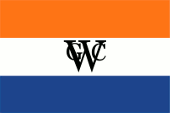 |
1640–1660, Flagge der Niederländischen Westindien-Kompanie – flag of the Dutch West India Company, Quelle/Source, nach/by: Wikipedia (EN) |
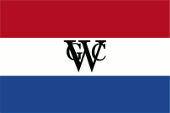 |
1660–1791, Flagge der Niederländischen Westindien-Kompanie – flag of the Dutch West India Company, Quelle/Source, nach/by: Wikipedia (EN) |
|
|
1640–1816, Die Insel gehört vorübergehend, zusätzlich und immer wieder, zu Spanien, England, Großbritannien, Frankreich – The island temporarily belongs, additionally and repeatedly, to Spain, England, United Kingdom, France, Quelle/Source: Wikipedia (DE) |
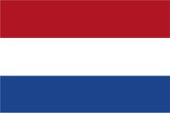 |
1816–1959, |
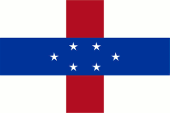 |
1959–1986, Flagge der Niederländischen Antillen – flag of the Netherlands Antilles, Seitenverhältnis – ratio = 2:3, Quelle/Source nach/by: Wikipedia (D) |
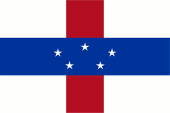 |
1986–2010, Flagge der Niederländischen Antillen – flag of the Netherlands Antilles, Seitenverhältnis – ratio = 2:3, Quelle/Source nach/by: Wikipedia (D) |
| Die Flagge von Saba wurde am 06.12.1985 angenommen. Sie zeigt die Farben Rot und Blau, unterbrochen durch einen weißen, bis an den Rand der Flagge reichenden Rhombus – also die Farben der Niederländischen Antillen und auch der Niederlande. In dem weißen Feld in der Mitte ein gelber Stern. Der Stern steht für die Insel und für die Hoffnung auf eine goldene Zukunft. Das Rot steht für Einheit und Mut, das Blau für die See und den Himmel, das Weiß für Frieden und Einheit. |
The flag of Saba was adoped on the 6th of December in 1985. It shows the
colours red and blue interrupted by a whiten to the border of the flag
reaching rhombus – so the colours of the Netherlands Antilles and also of
the Netherlands. In the white field in the middle a yellow star. The star stands for the island and for the hope for a golden future. The red stands for unity and courage, the blue for the ocean and for the heaven, the white for peace and unity. |
| Quelle/Source: Flaggen Enzyklopädie | |
Wappen – Coat of Arms: |
|
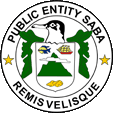 |
Wappen von Saba – coat of arms of Saba, Quelle/Source, nach/by: sabagov.nl |
| Das Wappen von Saba ist zentraler Teil des Siegels. Es zeit einen weißen Wappenschild mit einem wolkenumhüllten grünen Berg in der Mitte, die Silhouette des Vulkans Mount Scenery. Links und recht oberhalb ein Fisch und ein Segelschiff und unterhalb eine Süßkartoffel. Damit wird die Witschaft der Insel repräsentiert: Fischerei, Seefahrt und Landwirtschaft. Dazu gehören auch die Kohlblätter links und rechts des Schildes. Oberhalb des Schildes erscheint der Kopf eines Schuppensturmtauchers. Der Wahlspruch (Motto) der Insel lautet: "Remis Velisque", was übersetzt lautet: "Mit Rudern und Segeln". |
The coat of arms of Saba is the central part of the seal. It depicts a white
shield with a green mountain in the centre shrouded in clouds, the
silhouette of the volcano Mount Scenery. On the left and right above a fish and a sailing ship and below a sweet potato. This represents the economy of the island: Fishing, seafaring and agriculture. The cabbage leaves on the left and right of the shield are also part of this. The head of a scaled shearwater appears above the shield. The motto of the island is "Remis Velisque", which translates as "With oars and sails". |
|
Quelle/Source: Wikipedia (DE) |
|
| Landkarte – Map: |
|
| Zahlen und Fakten – Numbers and Facts: | |
|
|
|
|
|
|
|
|
|
|
|
|
|
|
|
|
|
|
|
|
|
|
Ursprung des Landesnamens – Origin of the Country's Name: |
|
| Der Ursprung des Namens "Saba" ist ungeklärt, er wurde so schon 1595 in einem Reisebericht von John Hawkins erwähnt. Eine Theorie sagt, dass der name von dem Arawak-Wort "Siba" kommt, was "Fels" heißt. Als Kulumbus die Insel 1493 entdeckte, nannte er sie "San Cristóbal" (St. Christopher, Christophorus). | The origin of the name "Saba" is unclear, but it was already mentioned in 1595 in a travel report by John Hawkins. One theory says that the name comes from the Arawak word "Siba", which means "rock". When Kulumbus discovered the island in 1493, he named it "San Cristóbal" (St. Christopher, Christophorus). |
| Quelle/Source: Wikipedia (EN) | |